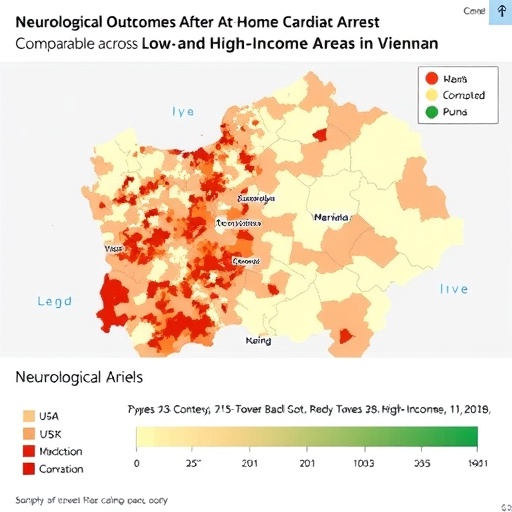As the world’s population ages rapidly, the healthcare community has turned its attention toward the pressing challenge of osteosarcopenia in the elderly. This debilitating condition, characterized by the loss of muscle mass and strength coupled with the deterioration of bone health, poses significant risks for older adults, potentially leading to frailty, falls, and an increased likelihood of disability. Researchers have long recognized that addressing the complexities of osteosarcopenia requires innovative approaches and comprehensive assessments to effectively evaluate intrinsic capacity in this vulnerable population.
Recent findings by a team of researchers led by Qiao and colleagues provide compelling insights into new indicators of osteosarcopenia and underscore the necessity of holistic assessments. Their study, titled “New indicators related to the osteosarcopenia in the elderly: assessment of intrinsic capacity,” offers a fresh perspective on how we can better evaluate and support the health of elderly individuals facing these dual challenges. The multifaceted nature of osteosarcopenia makes it critical to go beyond traditional assessments that focus solely on muscle and bone metrics.
The study reveals a nuanced understanding of intrinsic capacity, defined as the individual’s potential to manage their physical, social, and psychological health. While pre-existing frameworks have primarily concentrated on either muscle strength or bone density, the researchers emphasize a more integrated approach. By intertwining these dimensions of health, along with cognitive and emotional well-being, the study emphasizes the importance of creating a comprehensive health profile for the elderly.
To achieve a thorough assessment of intrinsic capacity, the researchers illustrate a need for novel indicators that reflect the interconnectedness of physical and functional health. For instance, incorporating measures of psychological resilience, nutritional status, and social engagement can provide a more holistic view of an individual’s overall capacity. The interplay between these factors signifies that favorable psychological and social conditions can positively influence physical health outcomes in older adults, thereby mitigating the adverse effects of osteosarcopenia.
Moreover, the research team has identified specific biomarkers that may play a role in assessing intrinsic capacity. By examining parameters such as inflammatory markers, hormonal levels, and metabolic profiles, the study posits that healthcare providers may better predict and track changes in osteosarcopenia over time. These advancements encourage a shift toward personalized medicine, where medical interventions can be tailored to individual needs based on their comprehensively assessed intrinsic capacity.
In addition to improving the assessment process, the findings also shed light on potential interventional strategies to combat osteosarcopenia. Exercise regimens tailored for older adults show promise in enhancing both muscle strength and bone density. However, the impact of mental health support and nutritional counseling is equally significant. The researchers highlight that interventions need to be multi-faceted, addressing not just physical activity, but also ensuring proper nutrition and emotional well-being.
Furthermore, the research emphasizes the crucial role of healthcare systems and policies in addressing osteosarcopenia among the elderly. The study advocates for a proactive approach that entails regular screenings and evaluations to identify at-risk individuals early on. By leveraging community resources and fostering collaboration among healthcare providers, we can initiate timely interventions designed to maintain and enhance the intrinsic capacity of older adults, thereby improving their overall quality of life.
The implications of this research extend beyond individual patients; they compel a rethinking of how healthcare infrastructure serves aging populations. By recognizing and prioritizing intrinsic capacity as a foundational metric for healthy aging, policymakers can help steer resources and programs toward more effective outcomes. Such actions may include community engagement initiatives, public health campaigns promoting physical activity, and the implementation of comprehensive screening protocols across healthcare settings.
As we aim to apply these findings in real-world contexts, researcher collaboration across disciplines will remain paramount. Areas such as gerontology, psychology, nutrition, and physical therapy must converge to tackle the multifactorial challenges presented by osteosarcopenia. Strategies that draw on the expertise of various healthcare professionals can lead to enriched holistic care models that adapt to the unique needs of each aging individual.
In conclusion, the groundbreaking research conducted by Qiao and colleagues enriches our understanding of osteosarcopenia and the importance of intrinsic capacity in elderly health assessments. By proposing and validating new indicators, the study paves the way for innovative approaches to identify, manage, and ideally prevent this debilitating condition. As the elderly population continues to grow globally, embracing these findings may very well indicate a transformative step in improving health outcomes and enhancing the quality of life for older adults.
The ongoing conversation around osteosarcopenia is essential for anyone invested in the health of our aging population. By focusing on the interconnected nature of physical capabilities, mental health, and social networks, we can redefine how we approach elderly care. As the researchers rightly note, empowering the elderly to reach their fullest intrinsic capacity is an essential goal within modern healthcare.
In this rapidly changing demographic landscape, collective action is required from healthcare providers, policymakers, and researchers alike. The fight against osteosarcopenia not only impacts the individuals directly affected but also has far-reaching implications for families and communities. The commitment to ensuring robust strategies that support elderly individuals will undoubtedly echo through generations to come.
The stakes couldn’t be higher. As we unravel the complexities surrounding osteosarcopenia and intrinsic capacity, we move a step closer to healthier, more vibrant aging populations worldwide. Each discovery brings us one step nearer to a future where optimal health in our elder years is not just a possibility but a reality for all.
Subject of Research: Osteosarcopenia in the elderly and assessment of intrinsic capacity
Article Title: New indicators related to the osteosarcopenia in the elderly: assessment of intrinsic capacity
Article References:
Qiao, X., Zhang, L., Man, F. et al. New indicators related to the osteosarcopenia in the elderly: assessment of intrinsic capacity.
BMC Geriatr 25, 737 (2025). https://doi.org/10.1186/s12877-025-06424-4
Image Credits: AI Generated
DOI: 10.1186/s12877-025-06424-4
Keywords: Osteosarcopenia, intrinsic capacity, elderly health, biomarkers, interventions, healthcare policy.
Tags: bone health deterioration in aging populationcomprehensive assessments in geriatric healthelderly osteosarcopenia assessmentfrailty and disability risks in elderlyholistic health evaluations for seniorsindicators of osteosarcopeniainnovative approaches to osteosarcopeniainterdisciplinary strategies for managing osteosarcopeniaintrinsic capacity in older adultsmuscle mass and strength loss in elderlynew research on elderly health challengessocial and psychological health in aging





